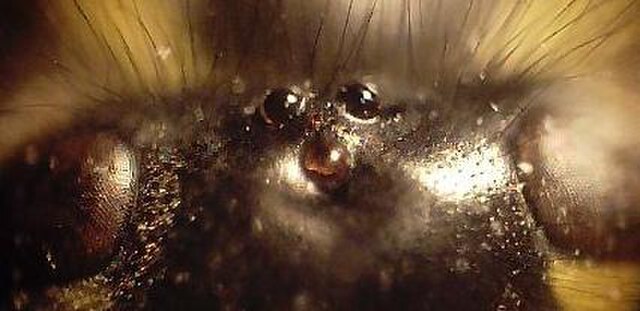Millipedes are a group of arthropods that are characterised by having two pairs of jointed legs on most body segments; they are known scientifically as the class Diplopoda, the name derived from this feature. Each double-legged segment is a result of two single segments fused together. Most millipedes have very elongated cylindrical or flattened bodies with more than 20 segments, while pill millipedes are shorter and can roll into a tight ball. Although the name "millipede" derives from Latin for "thousand feet", no species was known to have 1,000 or more until the discovery in 2020 of Eumillipes persephone, which can have over 1,300 legs. There are approximately 12,000 named species classified into 16 orders and around 140 families, making Diplopoda the largest class of myriapods, an arthropod group which also includes centipedes and other multi-legged creatures.
Millipede
Octoglena sierra (Colobognatha, Polyzoniida)
Anadenobolus monilicornis (Juliformia, Spirobolida)
Harpaphe haydeniana (Polydesmida)
Arthropods are invertebrates in the phylum Arthropoda. They possess an exoskeleton with a cuticle made of chitin, often mineralised with calcium carbonate, a body with differentiated (metameric) segments, and paired jointed appendages. In order to keep growing, they must go through stages of moulting, a process by which they shed their exoskeleton to reveal a new one. They are an extremely diverse group, with up to 10 million species.
Protaetia cuprea (copper chafer). Beetles are the most diverse order of arthropods.
Cicada climbing out of its exuviae while attached to tree
Long bristles (setae) of a Tliltocatl albopilosus tarantula
Head of a wasp with three ocelli (center), and compound eyes at the left and right








